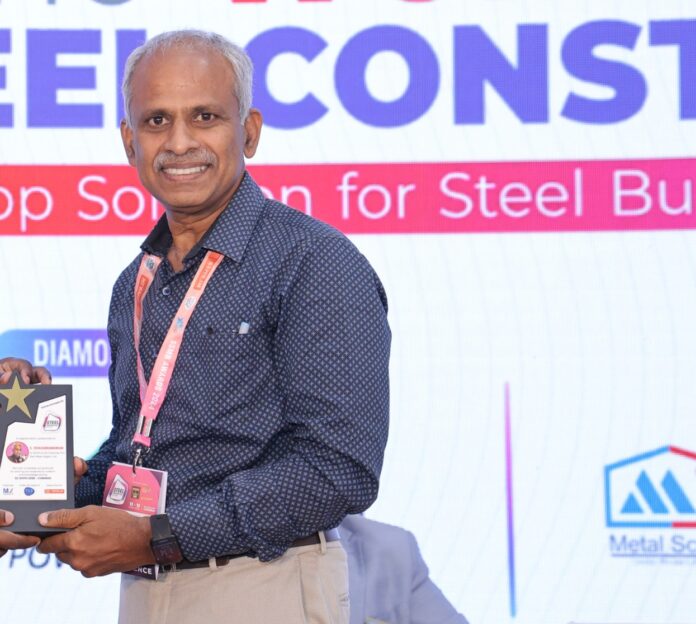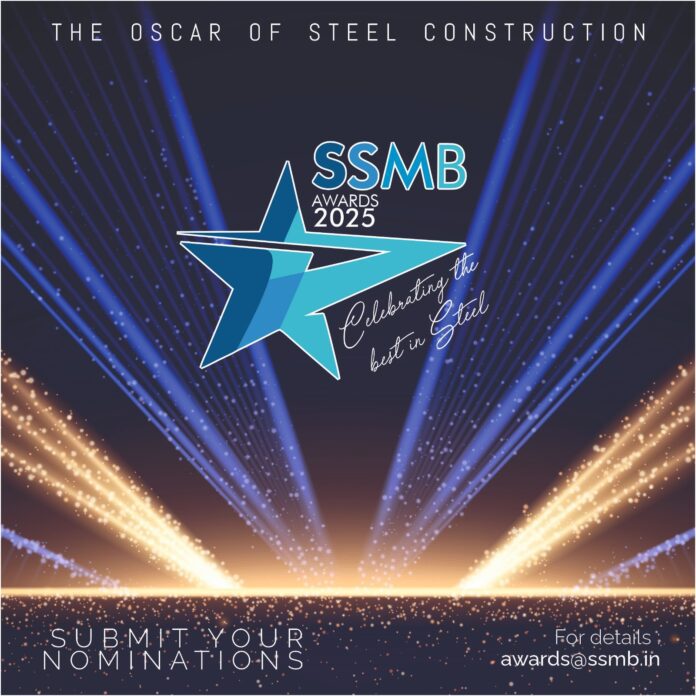With over three decades at Rail Vikas Nigam Ltd, S. Sivasubramanian has been instrumental in shaping India’s modern infrastructure, especially its landmark steel bridges. His work spans from restoring heritage structures to delivering some of the country’s most advanced movable bridges. In this candid conversation with SSMB, he opens up about the creative drive behind his work, the discipline of structural engineering, and how technology, teamwork, and adaptability have kept him at the forefront of the industry.
“Curiosity will take you further than fear ever could.”
What inspired your passion for engineering, and why structural engineering?
For me, structural engineering has always been a blend of science and artistry. The magic lies in translating an intangible idea into a physical form, something people can walk on, live in, or work within. Each project is a living story, shaped by constraints, possibilities, and design choices. That process, seeing a concept materialise at full scale, is not just satisfying, it is addictive. It is what pulled me toward this profession and kept me rooted in it all these years.
What milestones shaped your career?
The first milestone was stepping out of the academic bubble. In college, we study each subject in isolation. But in practice, structural engineering interacts constantly with geotechnics, materials, reinforcement detailing, and environmental factors.
The second milestone was the realisation that classroom knowledge is only the beginning. In the field, every “chapter” from college is an entire discipline in itself.
The third was embracing the philosophy that learning never stops. Every project, whether a small bridge or a complex movable span, has introduced new dimensions to my understanding, reinforcing that engineering is a continuous journey of discovery.
“Structural engineering is a blend of science and artistry, turning ideas into tangible reality never loses its charm.”
Your most significant challenge?
I have often seen engineers follow codal provisions mechanically without understanding their intent. In India, our codes rarely come with detailed explanatory notes like those in some other countries. This leads to a narrower interpretation and missed opportunities for optimisation. I have been vocal in professional forums about the need for commentary-style documents to make codes more accessible. If implemented, this could significantly improve structural practice and reduce over-conservatism.
How has steel evolved in India during your career?
The shift has been extraordinary. In the railways, steel is our bread and butter, as it is in almost every project we do. We have moved from riveted and conventional bolted connections to high-strength friction grip bolts, precision welding, and now robotic welding. These are not just incremental upgrades; they redefine speed, quality, and consistency in execution.
“Steel’s return to prominence is a story of technology, precision, and resilience.”
If you could introduce one transformative change in Indian construction, what would it be?
I witnessed it abroad before it became common in India about cranes transforming the construction process. Two decades ago in Malaysia, I saw massive projects executed with high crane dependency, which drastically cut timelines. By the late 2000s, India began adopting cranes more extensively, making high-rise steel structures not just possible but practical. This mechanisation bridged a huge efficiency gap in our industry.
What role has steel played in your professional journey?
When I started, steel’s use was declining in favour of RCC and PSC girders. Many early steel structures suffered from quality issues, which hurt their reputation. Over time, technological improvements in fabrication, protective coatings, and design tools restored steel’s standing. Today, anything beyond a 24 m span in railway work is almost always steel. It is versatile, durable, and fast to assemble, a combination that modern infrastructure demands.
“The Pamban Bridge taught me that once you understand the mechanics, complexity becomes beauty.”
Your favourite project?
Without doubt, the Pamban Bridge. In 2018, we were shown an animation of its lifting span. It looked futuristic, almost unreal. Many of us wondered if it could truly be built. Six years later, watching the span lift for the first time was awe-inspiring. That moment encapsulated engineering’s essence: understanding transforms impossibility into reality.
How do you stay ahead in an industry driven by rapid change?
The materials and methods at our disposal today are light years ahead of where we were two decades ago. But challenges like fatigue and corrosion persist. The future lies in developing or adopting alloys that address these durability concerns. Staying ahead is about keeping your curiosity alive, adapting your methods, and being open to what’s next.
Your approach to collaboration with other stakeholders in a project?
No significant structure is the work of one individual. Architects bring vision, engineers bring structure, fabricators bring precision, and contractors bring execution. The real magic happens when these disciplines work in sync, respecting and enhancing each other’s contributions.
Advice for young engineers?
Don’t let fear drive your decisions. Curiosity, pride in your work, and the willingness to learn will take you further than any degree alone. Engineering is about solving problems, not avoiding them.
Why It Matters?
- Sivasubramanian’s story is a reminder that engineering is as much about vision and collaboration as it is about calculation. His career reflects the evolution of steel construction in India, from hesitant adoption to technological innovation, and underscores the importance of adaptability, lifelong learning, and teamwork in shaping the infrastructure of tomorrow.
|
The Pamban Bridge: Lifting the Impossible In 2018, the animated model of Pamban’s lifting span raised eyebrows — was it even possible? Six years later, the sight of the real span rising into place silenced all doubt. For Sivasubramanian, it was not just an engineering milestone, but a lesson in perception: what seems impossible is often just waiting to be understood. |
Engineer Snapshot:
College Name & Place: Chengal Barai Nayakar Polytechnic
Graduated From: Institute of Engineers, Calcutta
Experience: Thirty-five years
Mentor: Sir M. Visvesvaraya, an eminent engineer who designed KRS Dam, Mysore
Mantra: Stay grounded
Remembered As: Good engineer
Current Project Highlight: We have completed more than 900 km of either doubling, new lane, gauge conversion or port connectivity.




